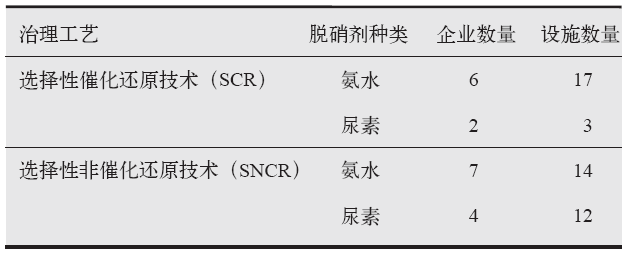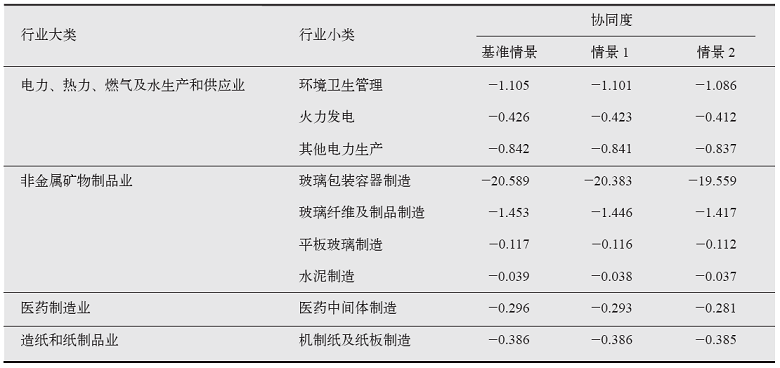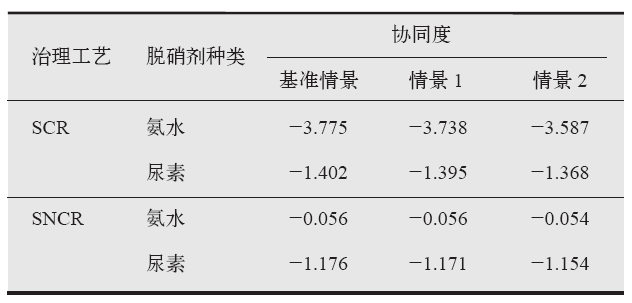| [1] |
Scheffe R, Hubbell B, Fox T, et al. The rationale for a multi-pollutant, multimedia air quality management framework[J]. Air & Waste Management Association, 2007 ( 5):14-20
|
| [2] |
邢有凯, 毛显强, 冯相昭, 等. 城市蓝天保卫战行动协同控制局地大气污染物和温室气体效果评估: 以唐山市为例[J]. 中国环境管理, 2020,12(4):20-28.
|
|
Xing Y K, Mao X Q, Feng X Z, et al. An effectiveness evaluation of co-controlling local air pollutants and GHGs by implementing blue sky defense action at city level: a case study of Tangshan city[J]. Chinese Journal of Environmental Management, 2020,12(4):20-28 (in Chinese)
|
| [3] |
孙泽亮. 我国高耗能行业节能减排协同效应及影响因素研究[D]. 西安: 西安建筑科技大学, 2020.
|
|
Sun Z L. Research on synergy effect and influencing factors of energy saving and emission reduction in my country’s high energy consumption industry[D]. Xi’An: Xi’an University of Architecture and Technology, 2020 (in Chinese)
|
| [4] |
冯相昭, 王敏, 梁启迪. 机构改革新形势下加强污染物与温室气体协同控制的对策研究[J]. 环境与可持续发展, 2020,45(1):146-149.
|
|
Feng X Z, Wang M, Liang Q D. Study on countermeasures to enhance the co-control of air pollutants and greenhouse gases in the new context of national institutional reform[J]. Environment and Sustainable Development, 2020,45(1):146-149 (in Chinese)
|
| [5] |
刘杰, 刘紫薇, 焦珊珊, 等. 中国城市减碳降霾的协同效应分析[J]. 城市与环境研究, 2019 (4):80-97.
|
|
Liu J, Liu Z W, Jiao S S, et al. Co-effect of CO2 mitigation and PM2.5 control in Chinese cities[J]. Urban and Environmental Studies, 2019 (4):80-97 (in Chinese)
|
| [6] |
夏伦娣, 杨卫华. “煤改电”对温室气体与大气污染物的协同减排效益评估[J]. 节能, 2019,38(11):142-145.
|
|
Xia L T, Yang W H. Effect accounting of “coal to electricity” project on cooperative emission reduction of greenhouse gas and atmospheric pollutants[J]. Energy Conservation, 2019,38(11):142-145 (in Chinese)
|
| [7] |
姜晓群, 王力, 周泽宇, 等. 关于温室气体控制与大气污染物减排协同效应研究的建议[J]. 环境保护, 2019,47(19):31-35.
|
|
Jiang X Q, Wang L, Zhou Z Y, et al. Suggestions on co-benefits between GHG emission control and air pollutant reduction[J]. Environmental Protection, 2019,47(19):31-35 (in Chinese)
|
| [8] |
吴建平, 李彦, 杨小力. 促进温室气体和大气污染物协同控制的建议[J]. 中国经贸导刊, 2019 (8):39-41.
|
|
Wu J P, Li Y, Yang X L. Proposals to promote coordinated control of greenhouse gases and air pollutants[J]. China Economic and Trade Guide, 2019 (8):39-41 (in Chinese)
|
| [9] |
李媛媛, 李丽平, 冯相昭. 污染物与温室气体协同控制方案建议[N]. 中国环境报, 2020-07-28 (003).
|
|
Li Y Y, Li L P, Feng X Z. Suggestions for cooperative control of pollutants and greenhouse gases[J]. China Environmental News, 2020-07-28 (003).(in Chinese)
|
| [10] |
李丽平, 周国梅, 季浩宇. 污染减排的协同效应评价研究: 以攀枝花市为例[J]. 中国人口?资源与环境, 2010,20(S2):91-95.
|
|
Li L P, Zhou G M, Ji H Y. Study of co-benefits assessment of pollution reduction: a case study in Panzhihua[J]. China Population, Resources and Environment, 2010,20(S2):91-95 (in Chinese)
|
| [11] |
李丽平, 姜苹红, 李雨青, 等. 湘潭市“十一五”总量减排措施对温室气体减排协同效应评价研究[J]. 环境与可持续发展, 2012,37(1):36-40.
|
|
Li L P, Jiang P H, Li Y Q, et al. Study of co-benefits assessment of pollution reduction on greenhouse gas reduction in Xiangtan during 11th Five-Year Plan[J]. Environment and Sustainable Development, 2012,37(1):36-40 (in Chinese)
|
| [12] |
冯相昭, 毛显强. 我国城市大气污染防治政策协同减排温室气体效果评价: 以重庆为案例 [M]. 北京: 社会科学文献出版社, 2018.
|
|
Feng X Z, Mao X Q. Evaluation of synergistic greenhouse gas emission reduction effect of urban air pollution control policies in China: a case study in Chongqing [M]. Beijing: Social Sciences Academic Press, 2018 (in Chinese)
|
| [13] |
顾阿伦, 滕飞, 冯相昭. 主要部门污染物控制政策的温室气体协同效果分析与评价[J]. 中国人口?资源与环境, 2016,26(2):10-17.
|
|
Gu A L, Teng F, Feng X Z. Assessment and analysis on co-benefits of pollution control and greenhouse gases emission reduction in key sectors[J]. China Population, Resources and Environment, 2016,26(2):10-17 (in Chinese)
|
| [14] |
毛显强, 曾桉, 胡涛, 等. 技术减排措施协同控制效应评价研究[J]. 中国人口?资源与环境, 2011,21(12):1-7.
|
|
Mao X Q, Zeng A, Hu T, et al. Study of coordinate control effect assessment of technological measures for emissions reduction[J]. China Population, Resources and Environment, 2011,21(12):1-7 (in Chinese)
|
| [15] |
毛显强, 邢有凯, 胡涛, 等. 中国电力行业硫、氮、碳协同减排的环境经济路径分析[J]. 中国环境科学, 2012,32(4):748-756.
|
|
Mao X Q, Xing Y K, Hu T, et al. An environmental-economic analysis of carbon, sulfur and nitrogen co-reduction path for China’s power industry[J]. China Environmental Science, 2012,32(4):748-756 (in Chinese)
|
| [16] |
Mao X Q, Zeng A, Hu T, et al. Co-control of local air pollutants and CO2 from the Chinese coal-fired power industry[J]. Journal of Cleaner Production, 2014,67:220-227
doi: 10.1016/j.jclepro.2013.12.017
URL
|
| [17] |
刘胜强, 毛显强, 胡涛, 等. 中国钢铁行业大气污染与温室气体协同控制路径研究[J]. 环境科学与技术, 2012 (7):168-174.
|
|
Liu S Q, Mao X Q, Hu T, et al. Roadmap of co-control of air pollutants and GHGs in iron and steel industry in China[J]. Environmental Science & Technology, 2012 (7):168-174 (in Chinese)
|
| [18] |
Feng X Z, Oleg L, Qin H. Co-controlling CO2 and NOx emission in China’s cement industry: an optimal development pathway study[J]. Advances in Climate Change Research, 2018,9:34-42
doi: 10.1016/j.accre.2018.02.004
URL
|
 ), 冯相昭1,2(
), 冯相昭1,2( ), 杜晓林1, 吴莉萍3, 赵梦雪1, 王鹏1,2, 安祺1
), 杜晓林1, 吴莉萍3, 赵梦雪1, 王鹏1,2, 安祺1
 ), FENG Xiang-Zhao1,2(
), FENG Xiang-Zhao1,2( ), DU Xiao-Lin1, WU Li-Ping3, ZHAO Meng-Xue1, WANG Peng1,2, AN Qi1
), DU Xiao-Lin1, WU Li-Ping3, ZHAO Meng-Xue1, WANG Peng1,2, AN Qi1









